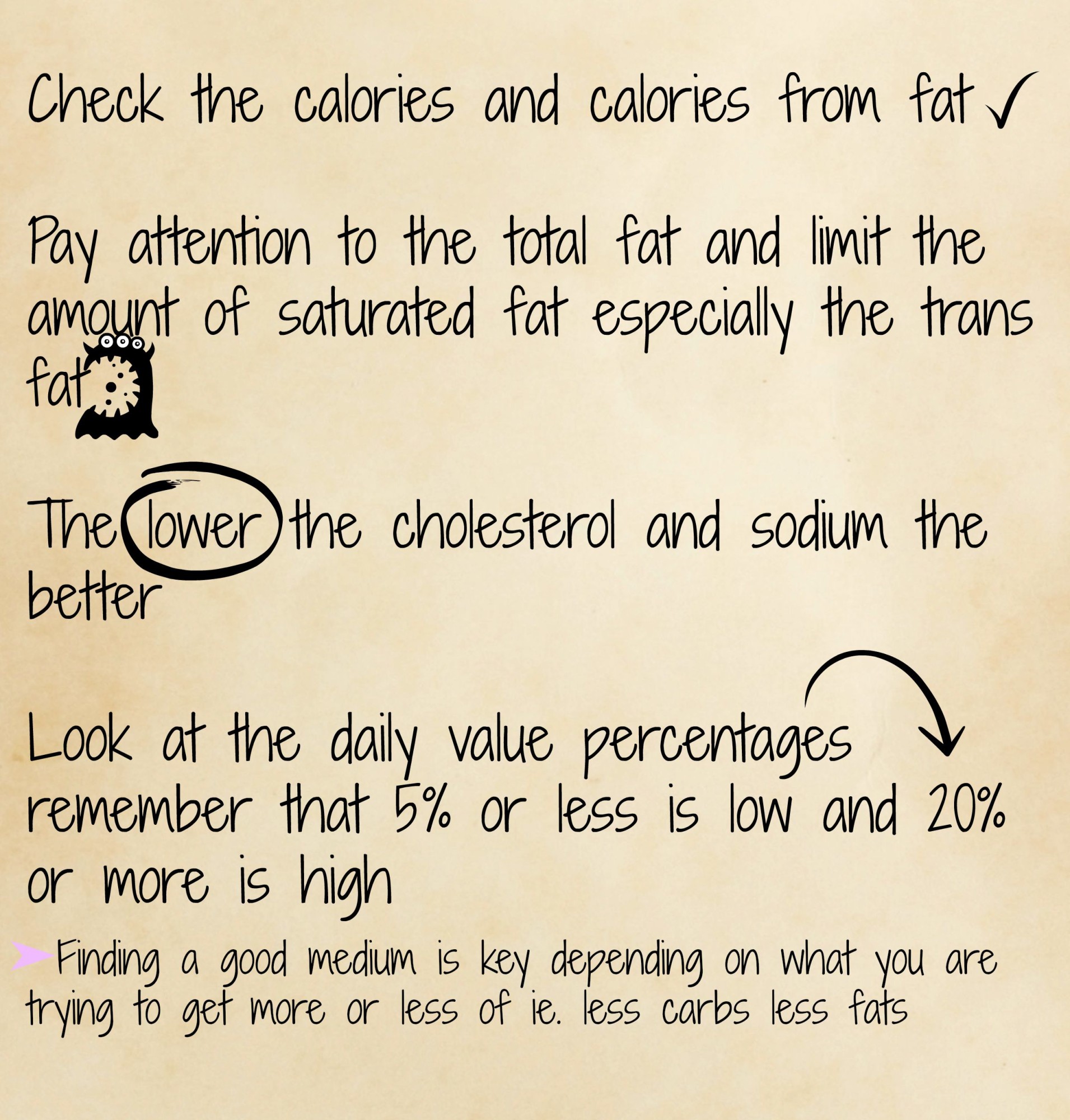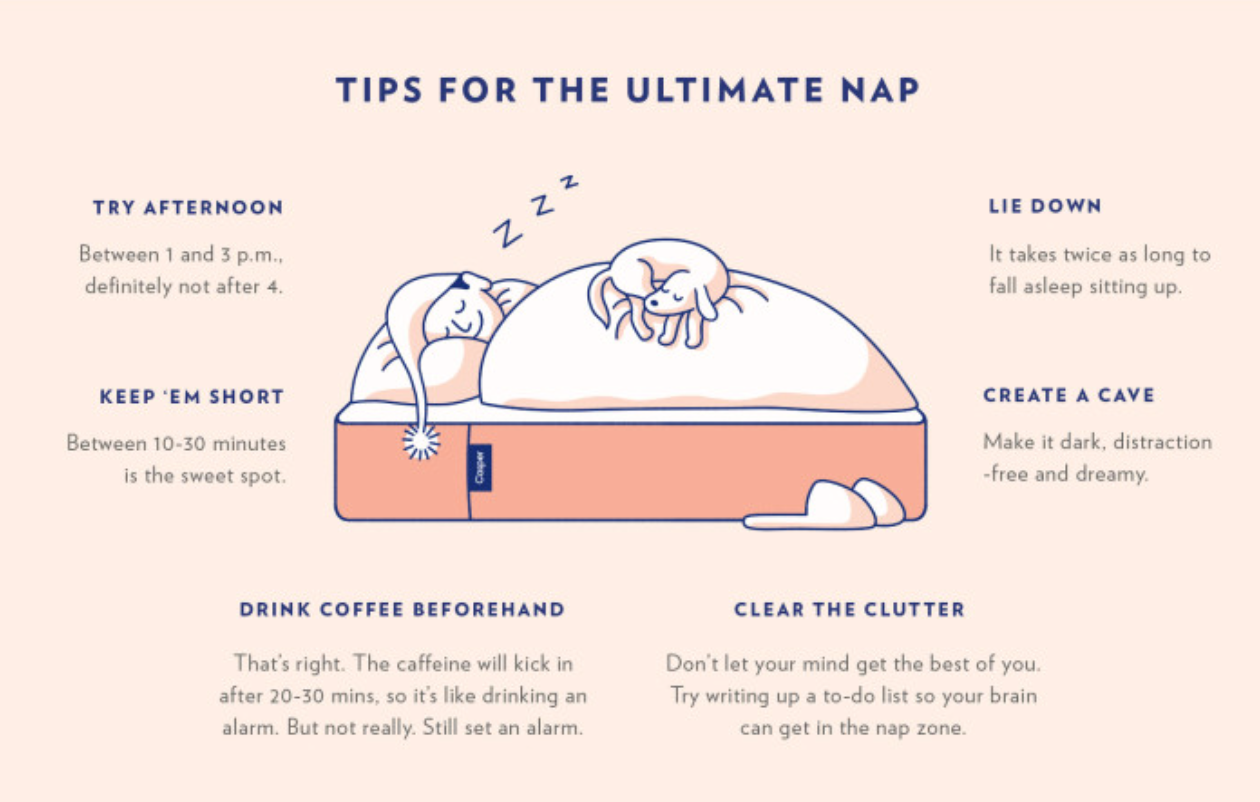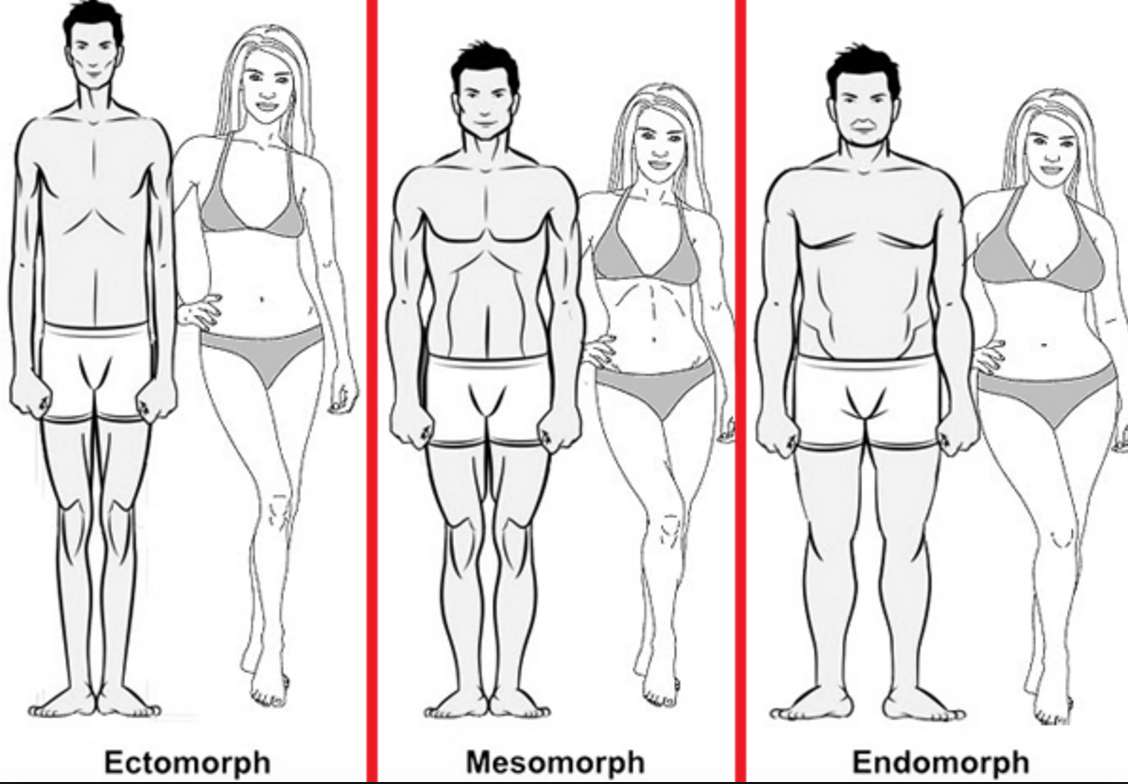Knowing what we’re putting into our body is important so today I want to talk to you about how to read Food Labels!
I could honestly eat enough food for what is probably meant for a family of four in one sitting, because of this I try to stay aware of the serving size and then make my way down. You can save this picture below for a quick reference next time you are looking at the nutrition facts!

For example going off the last point, when trying to go low carb I like to pay attention to the carbohydrates because too much of this makes my tummy bloat. Protein fills you up so when you’re trying to cut calories you want to include more protein.Take a peak at Dietary Fiber which is under Total Carbohydrates. Vitamin A, C and Calcium percentages are important as well because we always want to make sure we are getting enough of these nutrients.
In the foot notes, look at the list of ingredients, they are listed from the ingredients that weigh the most to what weighs the least. If it first ingredient is sugar I generally stick it back not he shelf. Another reason it’s important to read your food labels is because this is how we find fillers as well as if you’re allergic or sensitive to something checking the ingredients will help so that the food you eat isn’t making you sick or stopping you from reaching your fitness goals.
I often think simplicity is best when it comes to fashion and health, for fashion less is more and for health less is better
Some more quick tips;
Anytime you see partially hydrogenated that means there are trans fat, even when on the Nutrition Facts it might say 0 or doesn’t say anything, there are loopholes when labeling food such as if it’s less than .5 manufacturers don’t have to list it. A few more loopholes are listed below;
Again just looking at the labels on the front of the food packaging isn’t enough to know what is really being put in your food. Labels like All Natural, Real Fruit, Fresh, Low carb etc could all still be full of chemicals and additives, it’s up to the manufacturer. Apart from food often being mislabeled, there are also misleading claims.
Misleading claims:
Natural: This means it shouldnt contain synthetic or artificial ingredients, but it still could contain pesticides, additives and be processed.
Made with whole grains: the FDA does not define what % of grains is needed to use this claim however looking at the labels to see that whole grain or whole wheat flour is listed as the primary ingredient is helpful
Organic: In order to be labeled “organic” foods must stamped with a seal. These types of foods should be free of pesticides, fertilizers, antibiotics and neurotoxins, they are supposed to be higher in nutrients and is earth supportive.
Gluten free: Food has to contain less than 20 part per million of gluten however I wanted to clear this up, gluten free food items is only for people with celiac disease or a gluten sensitivity, this is not meant to be used as a weight loss strategy.
Always buy the freshest food possible and look for the Sell By date which is the last date the product should be sold. The food is usually good for 3-5 more days after this. The
expiration or “Use-By” date is the last date the food should be eaten. The Pack Date is the date the food was manufactured or processed and packaged.
I hate throwing food away so putting your own label on it helps to be mindful of it. We are so lucky to have an abundance of food so it just feels unnecessary to waste it.
Don’t forget the September challenge ends on Wednesday, you can click here to like my Facebook page and participate while there is still time to win some workout gear!
xx

 FITNESS TIPS (FOR BEGINNERS)
FITNESS TIPS (FOR BEGINNERS) NAP DAY
NAP DAY ECTOMORPH, MESOMORPH, ENDOMORPH
ECTOMORPH, MESOMORPH, ENDOMORPH





[…] Take a peak at prices next time you’re in the grocery store and compare, how much is your regular milk vs. soy/coconut/almond milk. If a bag of organic green beans are out of your budget opt for grabbing fresh green beans again compare prices and decide if you are willing to spend the extra cent or dollar amount and forgo that unhealthy snack. If you are looking to jump start a healthy eating lifestyle really take a look at what you need versus what you don’t need. Larger brands will also be a bit more expensive than the off brands, so don’t get sucked into this, also take a look at the ingredients of what you are buying, learn about reading food labels. […]